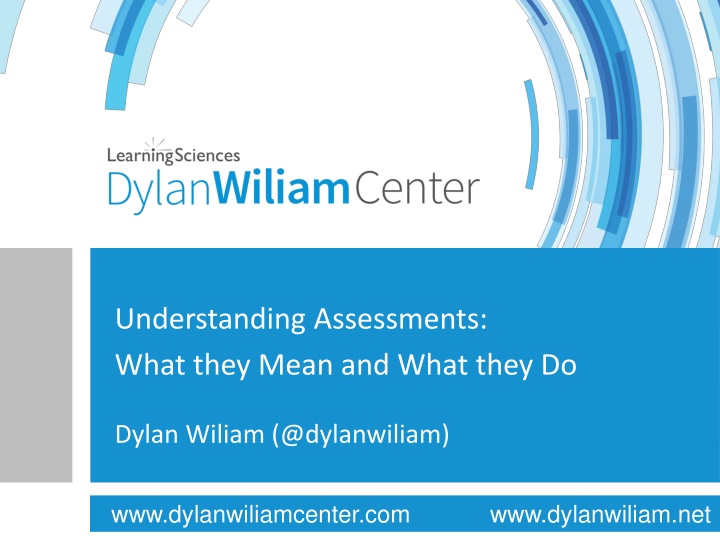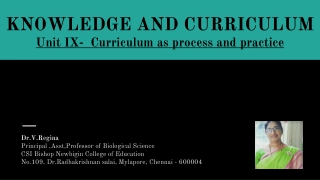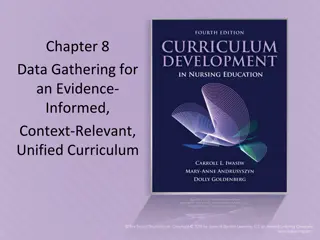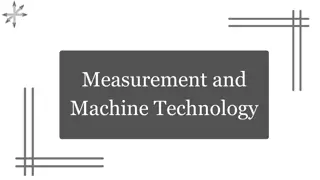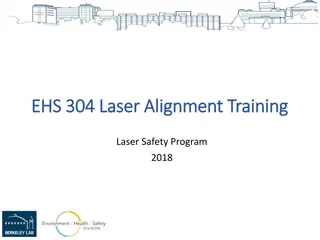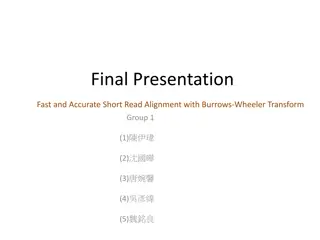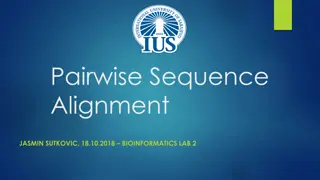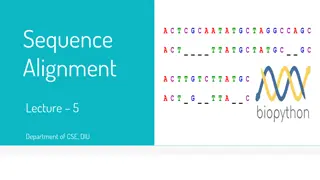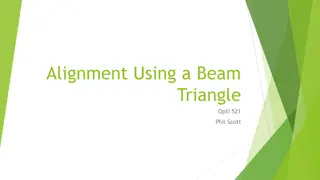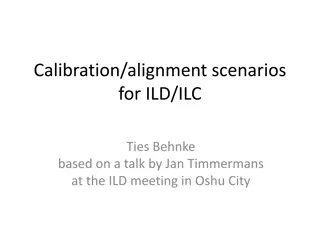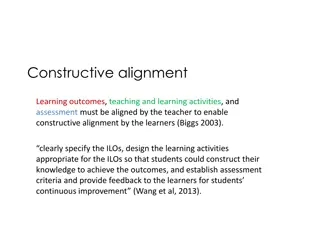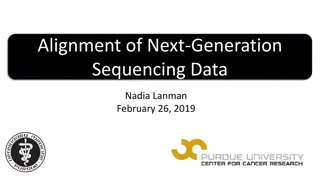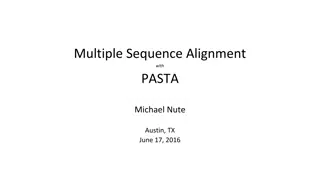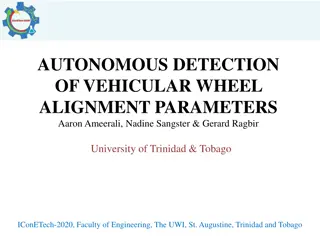Insights on Assessment Systems and Curriculum Alignment
The relationship between assessment systems and curriculum design, this content delves into principles governing assessment system design. It underlines the importance of aligning assessments with local needs and educates on creating effective assessment systems tailored to individual school curricula. The content showcases cautionary tales and strategies, offering valuable insights for educators and policymakers alike. Learn about equalizing ranges for different subjects, utilizing class ranks, and the significance of backward design in education systems.
Download Presentation

Please find below an Image/Link to download the presentation.
The content on the website is provided AS IS for your information and personal use only. It may not be sold, licensed, or shared on other websites without obtaining consent from the author.If you encounter any issues during the download, it is possible that the publisher has removed the file from their server.
You are allowed to download the files provided on this website for personal or commercial use, subject to the condition that they are used lawfully. All files are the property of their respective owners.
The content on the website is provided AS IS for your information and personal use only. It may not be sold, licensed, or shared on other websites without obtaining consent from the author.
E N D
Presentation Transcript
Understanding Assessments: What they Mean and What they Do Dylan Wiliam (@dylanwiliam) www.dylanwiliamcenter.com www.dylanwiliam.net
Initial assumptions 2 Any assessment system should be designed to assess the school s curriculum rather than having to design the curriculum to fit the school s assessment system. Since each school s curriculum should be designed to meet local needs, there cannot be a one-size-fits-all assessment system each school s assessment system will be different. There are, however, a number of principles that should govern the design of assessment systems, and There is some science here knowledge that people need in order to avoid doing things that are just wrong.
Assessment: A cautionary tale A B C D E F G H Total Adams 100 30 47 72 40 75 30 47 441 Brown 90 38 43 60 20 65 48 70 434 Collins 61 36 40 45 41 55 62 80 420 Dorkin 63 32 51 90 30 70 47 35 418 Evans 56 55 41 82 45 40 49 41 409 Fuller 80 45 49 64 65 45 38 20 406 Grant 23 47 45 55 60 80 32 60 402 Howell 40 35 52 70 56 20 60 65 398 Iman 85 40 60 40 28 51 55 30 389 Jones 72 54 50 10 25 35 66 75 387 Keller 48 57 55 34 70 60 36 10 370 Lant Mean 10 60 59 20 35 30 70 58 342 61 44 49 54 43 52 49 49
Equalizing the range for each subject A B C D E F G H Total Adams 100 0 35 77 40 92 0 53 397 Brown 89 27 15 63 0 75 45 86 400 Collins 57 20 0 44 42 58 80 100 401 Dorkin 59 7 55 100 20 83 43 36 403 Evans 51 83 5 90 50 33 48 44 404 Fuller 78 50 45 68 90 42 20 14 407 Grant 14 57 25 56 80 100 5 71 408 Howell 33 17 60 75 72 0 75 79 411 Iman 83 34 100 38 16 52 62 29 414 Jones 69 80 50 0 10 25 90 93 417 Keller 42 90 75 30 100 67 15 0 419 Lant Mean 0 100 95 12 30 17 100 69 423 56 47 47 54 46 54 49 56
And using class ranks in each subject A B C D E F G H Total Adams 1 12 8 3 7 2 12 7 52 Brown 2 8 10 6 12 4 7 3 52 Collins 7 9 12 8 6 6 3 1 52 Dorkin 6 11 5 1 9 3 8 9 52 Evans 8 3 11 2 5 9 6 8 52 Fuller 4 6 7 5 2 8 9 11 52 Grant 11 5 9 7 3 1 11 5 52 Howell 10 10 4 4 4 12 4 4 52 Iman 3 7 1 9 10 7 5 10 52 Jones 5 4 6 12 11 10 2 2 52 Keller 9 2 3 10 1 5 10 12 52 Lant 12 1 2 11 8 11 1 6 52
Before we can assess 6 The backward design of an education system Where do we want our students to get to? Big ideas What are the ways they can get there? Learning progressions When should we check on/report progress? Inherent and useful checkpoints
7 Big ideas
Big ideas 8 A big idea helps make sense of apparently unrelated phenomena is generative in that is can be applied in new areas
Big ideas in reading 9 Writing is an attempt to communicate meaning Making sense of text often requires making connections between sentences Writers often choose words for the effect they have on the listener/reader The hero s journey (Campbell, 1949)
10 Learning progressions What is it that gets better when someone gets better at reading?
11 The seductive allure of neuroscience
Cortical language localization 12 117 individuals (aged 4 to 80) undergoing frontal or frontotemporoparietal craniotomies as a treatment for epilepsy Subjects were shown line drawings of familiar objects and asked to name what they had seen while exposed regions of the cerebral cortex were stimulated with electric current Naming errors were taken as indicating that the region in question was essential to language Ojemann, Ojemann, Letitch, and Berger (1989)
Number of patients with a site in each zone (out of 117) 6 8 5 14 17 14 33 11456858 51 34 8 11 66 82 72 61 64 62 605861 1023 58 44 12 76 46 3 60 6 Ojemann, Ojemann, Letitch, and Berger (1989)
Percentage of patients with a site in each zone with significant naming errors in that zone 50 37 20 43 29 50 45 271914 26 23 9 8 18 29 79 36 29 36 26 19 32 42 1921 14 7 2 0 00 5 0 0 Ojemann, Ojemann, Letitch, and Berger (1989)
All models are wrong; some are useful Since all models are wrong the scientist cannot obtain a correct one by excessive elaboration. On the contrary following William of Occam he should seek an economical description of natural phenomena. Just as the ability to devise simple but evocative models is the signature of the great scientist so overelaboration and overparameterization is often the mark of mediocrity. (Box, 1976 p. 792)
Learning progressions 16 What gets better when students get better at reading? Phonemic awareness Phonics Fluency Vocabulary Text comprehension National Reading Panel (2001)
The simple view of reading 17 Background knowledge Vocabulary Language structures Verbal reasoning Literacy knowledge Sight recognition Decoding Phonological awareness Scarborough (2001)
Expanded model of reading (Willingham, 2017) Letters Translation rules Word sounds Spellings Word meanings Syntactic rules Sentence representation Situation model Idea web
Copy this 19
Reading skills: what are they really? A manifold, contained in an intuition which I call mine, is represented, by means of the synthesis of the understanding, as belonging to the necessary unity of self-consciousness; and this is effected by means of the category. What is the main idea of this passage? A. Without a manifold, one cannot call an intuition mine. B. Intuition must precede understanding. C. Intuition must occur through a category. D. Self-consciousness is necessary to understanding Hirsch (2006)
Lost in translation? Comprehension depends on constructing a mental model that makes the elements fall into place and, equally important, enables the listener or reader to supply essential information that is not explicitly stated. In language use, there is always a great deal that is left unsaid and must be inferred. This means that communication depends on both sides, writer and reader, sharing a basis of unspoken knowledge. This large dimension of tacit knowledge is precisely what is not being taught adequately in our schools. Hirsch (2009 loc. 176)
Domain knowledge and memory 3rd (N=64), 5th (N=67) and 7th (N=54) grade students from Heidelberg, Germany, tested on reading expertise and soccer knowledge 13-item questionnaire on soccer knowledge standardized reading comprehension test Students heard (twice) and read a well-structured readable story on a young player s experiences in a soccer game Tested 15 minutes later with a cloze version of the test with 20 blanks
17.0 16.4 11.1 11.0 Schneider, K rkel, and Wiener (1989)
24 Assessment
Written examinations 25 They have perverted the best efforts of teachers, and narrowed and grooved their instruction; they have occasioned and made well nigh imperative the use of mechanical and rote methods of teaching; they have occasioned cramming and the most vicious habits of study; they have caused much of the overpressure charged upon schools, some of which is real; they have tempted both teachers and pupils to dishonesty; and last but not least, they have permitted a mechanical method of school supervision. (White, 1888 pp. 517-518)
Campbells law 26 The more any quantitative social indicator is used for social decision-making, the more subject it will be to corruption pressures and the more apt it will be to distort and corrupt the social processes it is intended to monitor. (Campbell, 1976 p. 49) All performance indicators lose their meaning when adopted as policy targets The clearer you are about what you want, the more likely you are to get it, but the less likely it is to mean anything
The Lake Wobegon effect Test C Test B Test C 4.4 4.3 4.2 Grade equivalents 4.1 4.0 3.9 3.8 3.7 3.6 3.5 3.4 1986 1987 1988 1989 1990 Koretz, Linn, Dunbar and Shepard (1991)
Effects of narrow assessment 28 Incentives to teach to the test Focus on some subjects at the expense of others Focus on some aspects of a subject at the expense of others Focus on some students at the expense of others ( bubble students) Consequences Learning that is Narrow Shallow Transient
29 Getting assessment right
What is an assessment? 30 An assessment is a procedure for making inferences We give students things to do We collect the evidence We draw conclusions Key question: Once you know the assessment outcome, what do you know? For any test: some inferences are warranted (valid) some are not
Validity 31 Evolution of the idea of validity A property of a test A property of students scores on a test A property of inferences drawn on the basis of test results One validates not a test but an interpretation of data arising from a specified procedure (Cronbach, 1971) Consequences No such thing as a valid (or indeed invalid) assessment No such thing as a biased assessment Formative and summative are descriptions of inferences
Meanings and consequences of assessment Evidential basis What does the assessment result mean? Consequential basis What does the assessment result do? Assessment literacy (Stiggins, 1991) Do you know what this assessment result means? Does it have utility for its intended use? What message does this assessment send to students (and other stakeholders) about the achievement outcomes we value? What is likely to be the effect of this assessment on students?
Validity revisited Validity is an integrative evaluative judgment of the degree to which empirical evidence and theoretical rationales support the adequacy and appropriateness of inferences and actions based on test scores or other modes of assessment. (Messick, 1989 p. 13) Social consequences: Right concern, wrong concept (Popham, 1997)
Quality in assessment Threats to validity Construct-irrelevant variance Systematic: good performance on the assessment requires abilities not related to the construct of interest Random: good performance is related to chance factors, such as luck (effectively poor reliability) Construct under-representation Good performance on the assessment can be achieved without demonstrating all aspects of the construct of interest
35 Working as a group, try to frame one validity issue as an issue of construct- irrelevant variance or of construct under-representation. Discussion
36 Understanding reliability
Understanding test scores Consider a test of students ability to spell words drawn from a bank of 1000 words. What we can conclude depends on: The size of the sample The way the sample was drawn Students knowledge of the sample The amount of notice given
Samples and reliability Suppose we ask a student to spell 20 of the words drawn at random, at five different times of the day, with the following results 15 17 14 15 14 On average, the student scores 15 out of 20 Our best guess is the student can spell 750 of the 1000 words If the results were: 20 12 17 10 16 Our best guess is still that the student knows 750 of the 1000 spellings But now we are much less certain about this
Some examples Example 1 Actual score Difference from average 15 0 17 +2 14 -1 15 0 14 -1 Average error 0 (by definition!) Standard deviation of errors 1.2 Example 2 Actual score 20 12 17 10 16 Difference from average Average error 5 -3 0 (by definition!) +2 -5 +1 Standard deviation of errors 4.0
Quantifying reliability The standard error of measurement or SEM is just the standard deviation of the errors averaged over all test takers The reliability of the test is:
Relationship of reliability and error For a test with an average score of 50, and a standard deviation of 15 (so that most scores range from 20 to 80), errors of measurement are as follows: Reliability Standard error of measurement 0.70 8.2 7.5 0.75 0.80 6.7 0.85 5.8 4.7 0.90 0.95 3.4
What does this mean? Consider a class of 25 students taking a reading test with a reliability of 0.85 an average score of 50 a standard deviation of 15 (most scores range from 20 to 80) Then 17 students get a score within 6 points of their true score 7 students get a score that is more than 6 points, but less than 12 points from their true score and one student gets a score that differs from their true score by more than 12 points Unfortunately you won t know which student and you won t know if their score was higher or lower than it should have been
Reliability: 0.75 100 90 80 70 Observed score 60 50 40 30 20 10 0 0 10 20 30 40 50 60 70 80 90 100 True score
Reliability: 0.80 100 90 80 70 Observed score 60 50 40 30 20 10 0 0 10 20 30 40 50 60 70 80 90 100 True score
Reliability: 0.85 100 90 80 70 Observed score 60 50 40 30 20 10 0 0 10 20 30 40 50 60 70 80 90 100 True score
Reliability: 0.90 100 90 80 70 Observed score 60 50 40 30 20 10 0 0 10 20 30 40 50 60 70 80 90 100 True score
Reliability: 0.95 100 90 80 70 Observed score 60 50 40 30 20 10 0 0 10 20 30 40 50 60 70 80 90 100 True score
48 Understanding what this means in practice
49 Grouping students by ability
Using tests for grouping students by ability Using a test with a reliability of 0.9, and with a predictive validity of 0.7, to group 100 students into four ability groups: should be in group 1 group 2 group 3 group 4 group 1 23 9 3 group 2 9 12 6 3 students placed in group 3 3 6 7 4 group 4 3 4 8 Only 50% of the students are in the right group
